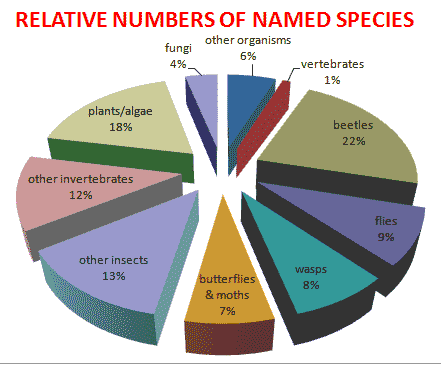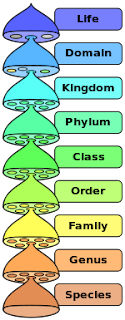
Knowledge of Biology in Hindu Scriptures
Western scholars attributed the origin of all branches of science and knowledge to the Greeks. This is due to two reasons: 1.They did not have Tamil and Sanskrit books translated into English when they wrote such things and nobody challenged their views and 2. Though Hindu scriptures pre date all that is Greek, the latest versions of Hindu scriptures have interpolated sections. So the Westerners dated most of the things to first few centuries of Common Era (AD).All encyclopaedias point in one direction—Greek origin or rarely Egyptian or Sumerian origin. That is wrong.How?
8.4 million Yonibedham
The wonder is that Hinduism comes very close to the modern science in several fields. Whether it is astronomy or origin of universe or number of living organisms, Hindu scriptures come very, very close to modern estimates, where as others lag far behind. This article is about biology only. Hindu scriptures said that there are 8.4 million different varieties of living beings. The Sanskrit words in the scriptures are 84 hundred thousand Yoni Bedham. One must remember that it was written at least 2000 years ago. Even today science is not sure about the number of organisms on earth. They keep on adding every year. When the genetic mapping is completed they may reduce it or increase it with introducing new classifications. The current number is on the basis of what we know today and how we classify them.
Tamils repeated whatever said in the Sanskrit scriptures and added their own knowledge and in some places fine tuned them. In addition, they evolved their own systems as well .A typical example is Siddha Medical system parallel to Ayurveda Medical System. Both of them believed in the principle of Prevention is better than cure.

"From ant to elephant" is an expression found in Hindu scriptures.
Six level of knowledge
Tolkappiyam, the oldest Tamil book dated to 1[SUP]st[/SUP] century BC, says that living beings are classified in to six categories depending upon the level of their evolution. It placed human beings at the top with ‘six senses’. The living organisms with one sense are trees and grass. They have the sense of touch. Living beings with two senses are snails and oysters. They can taste and feel. Beings with three senses of taste, touch and smell are ants and termites. And with four senses are crabs and dragon flies. The fourth sense added here is vision. Living organisms with five senses are horses, elephants, pigs and birds. They have the hearing as the extra sense. Humans are the only living beings with SIX SENSES. They have mind, meaning able to think. (Ref.Tol-Porul.571 --578).
Now we use Linnaeus classification for plants and animals. He published his works in the 1750s. Neither Tolkappiar or nor Linnaeus is perfect in their classification. But we can appreciate their scientific approach. They tried to classify them on a reasonable basis. With genetic mapping of organisms we may even throw Linnaeus in to dust bin soon.
Tamil Landscape Divisions
Tamils divided their land into 4+1 categories. They gave a predominant plant’s name for each of the five landscapes: Kurinchi (a mountain flower) for hilly areas, Mullai (jasmine) for forests, Marutham (tree with red flowers) for pastoral region, Neytal (water flower) for sea shores and Palai ( desert tree) for arid lands.
They followed their northern counterparts in their classification. Hindu mythology divides the world into 7 or 9 Dweepas (regions) on the basis of a predominant plant or animal. India is known as Jambudweepa, land of jambju or Rose Apple trees. The other dweepas are : Plaksha (fig tree), Shalmali (Silk Cotton Tree),Kusha (grass), Krauncha (Curlew Birds),Pushkara (lotus) and Saka (Teak= Tectona grandis).

Manu’s classification of Animals
Manu Smriti, the ancient law book of Hindus, classifies animals in different ways. The references are spread over in chapter 5. It shows that the ancients classified them on the basis of hoofs, whether they are carnivorous or herbivorous, whether they live in villages or forests etc. It indicates that they also thought about it and divided them in to various categories.
The fact that vegetarianism originated, supported and spread to different parts of the world from India is enough to prove that they knew about animals and plants. The fact that India is the country where lot of herbs are listed in Tamil and Sanskrit medical books is enough to prove that they based their lives on the flora and fauna of the country. An in depth study may throw more light on this subject. Westerners quote only the positive things from Greek literature. If we come to know about their superstitious beliefs about animals and plants we will have a good laugh. Westerners always date anything Greek prior to Indian scriptures. But anyone who does a quantitative and qualitative analysis of the available materials can easily find which one was first. Even before the Greeks started writing in 800 BC (Homer’s Iliad and Odyssey), India had incredibly huge, voluminous Vedic literature where A to Z (astronomy to zoology) is dealt with.
Pictures are taken from various websites. Thanks. All are related to modern science.
Please read my other posts:
1.Flowers in Tamil Culture 2. How Old is Indian Civilization?
